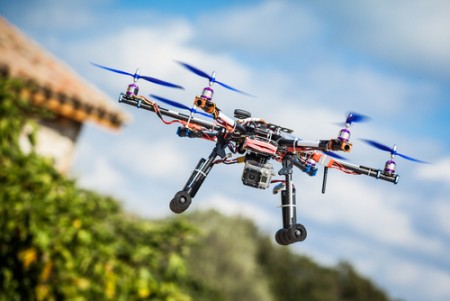November 17, 2015 – Guest blogger Roy Rasmussen is a freelance copywriter and author of “Publishing for Publicity.” Roy specializes in helping small businesses reach their target market through focused sales messages. Some of his recent projects include books on cloud computing, small business management, sales, business coaching, social media marketing, and career planning. Today Roy looks at the current state of drones and what’s in store for them in the near future. I hope you enjoy the read and please feel free to comment.
———-
Drones are a hot gift this holiday season. Amazon put Air Hogs’ remote-controlled Millennium Falcon Quad on its hot holiday toy list when released on Oct. 15th and retailers including Walmart, Target and Toys R Us expect the Star Wars drone to sell very well over the next few weeks. Even the Federal Aviation Administration expects to see more than 1 million drones sold this holiday shopping season. From the stuff of science fiction just a few years ago, drones have quickly become mainstream.
Here are a few ways drones will shape 2016 and the near future.
Home Use
The consumer drone market is on pace to grow 167% year-over-year in 2015, according to estimates from Kleiner Perkins Caufield Byers’ partner Mary Meeker. The Consumer Electronics Association expects the global market for consumer drones to approach $300 million by 2018, more than tripling the $84 million of 2014.
Experts are predicting that home security will be one of the most popular applications for drone technology. Home security drones are designed to dock on a rooftop battery charger until activated by an intruder alert or manual signal. They then launch and begin taking aerial photographs of your property, along with the faces and license plate numbers of any suspected intruders. Footage can be fed to your smartphone or directly to law enforcement. Other home drones can perform tasks such as watching your kids and ground-based ones can mow your lawn.
Recreational Drones
High-end drone companies such as DJI, 3DRobotics, and Yuneec emphasize aerial photography, becoming a popular recreational use for drone technology. Their products feature 4K video and streaming to mobile devices. MyFirstDrone.com provides a buyer’s comparative guide to the best drones for sale. Outfitter retailers such as Cabela’s are selling recreational drones this holiday shopping season, to hobbiests, outdoor adventurers and hunters with starting prices as low as $129.99 U.S.
Commercial Applications
Images of Amazon drones dropping off packages characterize popular perceptions of commercial drones, but e-commerce and package delivery will not be an early focus of drone technology, states a Business Insider report. Instead, the commercial drone market will take shape around a handful of industries including real estate, construction, agriculture, mining, energy, utilities, and film and news production. According to a recent industry study reported in USA Today, one-third of the first 500 commercial drone permits granted by the FAA went to real-estate businesses for applications such as showcasing, surveying, photographing, and inspecting properties.
Lowering the cost of aerial photography is a market driver for drone purchases. Drone-deployed cameras and sensors can empower businesses by giving them sight-on-scene data and images to make better decisions. In remote areas drones can be the eyes and ears of mining and oil and gas prospecting companies searching for new finds. And drone delivery can speed distribution of products and services as illustrated by the first successful U.S. drone delivery of medical supplies from an airfield to a medical clinic this past July.
Regulatory Issues
The industry awaits the FAA regulatory hurdle clearance. In 2012, the U.S. Congress mandated the FAA to draft regulations to integrate drones into U.S. airspace by September 30, 2015. This February the FAA proposed regulations that would allow commercial drones to fly under 500 feet during daylight hours as long as the drone stayed within sight of its operator. In July, Amazon petitioned the FAA to allow testing of commercial drones. This prompted senior FAA official Michael Whitaker to tell a Congressional committee that the proposed legislation would be in place within a year.
Now, that timeline appears to have been stepped up in the wake of safety concerns. Transportation Secretary Anthony Foxx announced in October that many unmanned craft will soon require registration. A task force of government officials, industry representatives, pilots and hobbyists has been set up to work out the details.









